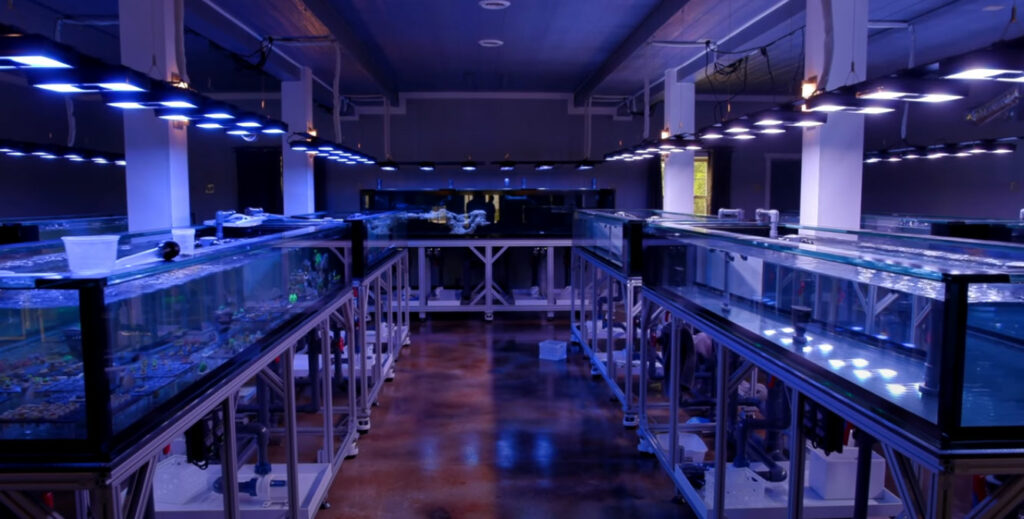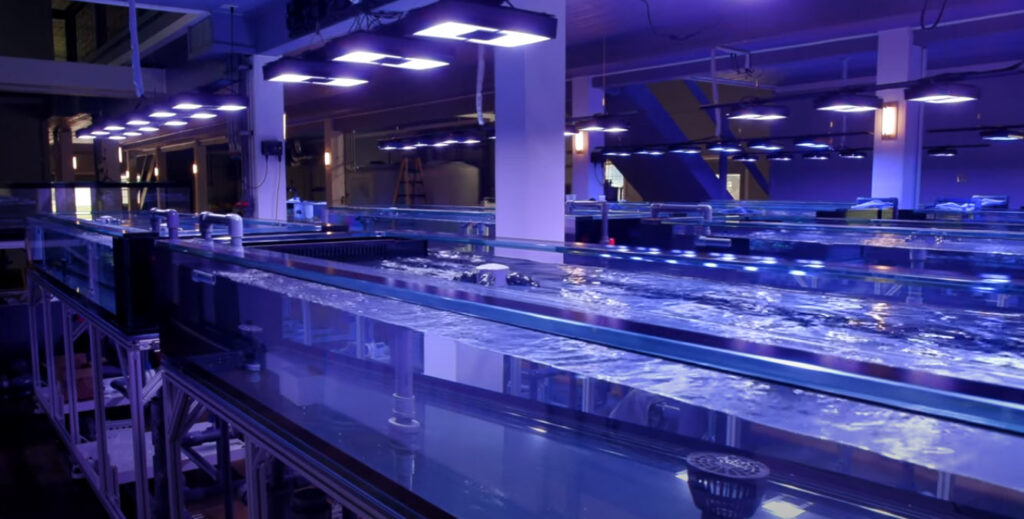
“A lot of folks are getting into propagation and fragging corals, and I wanted to give some insight on what I would consider an ideal frag tank system. I kind of have a little bit of experience in this regard, so perhaps you can learn from my past mistake.”
Tidal Gardens founder Than Thein has created an incredibly helpful overview for the prospective coral propagator, pulling from years of experience on his Ohio-based coral farm. This high-level overview offers seven helpful tips for system design ranging from construction considerations to stocking and even an intriguing maintenance routine.
Eurobraces
What is a a eurobrace? It’s a section of glass that goes around the perimeter of the top of the tank. What are the benefits?
- a valuable workspace
- keeps water in the tank when working within it
- reduces the risk of fish jumps
- makes the tank stronger
Tank Height
What’s the ideal height on a frag tank? Thein suggests that the goldilocks zone is 12 to 18 inches (30 to 45 cm). Shallower, and you’ll have growing problems and increased mess. Deeper, and maintenance becomes an issue.
Lighting Height
T5, Metal Halide, LED, Thein suggests that they all work these days. But how high should your lighting be mounted? High enough that you can freely work in your frag tanks without having to move the equipment out of the way. Yes, you might lose intensity, and you might make up for it with more fixtures, but from a functional standpoint these are small sacrifices.
“In our 10-foot tanks, we decided to go with 6 Radions instead of the bare-bones 3 fixtures that might have been OK-ish for coverage,” says Thein. “We wanted a little bit of intensity, and we wanted more angles of lighting spread. LED guys, you know that LEDs kind of suffer from shading issues when there’s not enough coverage. With diffusers and additional fixtures, we fix all those downsides, but it does come with an additional cost.”
Tank Material
Glass.
“I am all in on glass,” remarks Thein. While Tidal Gardens started out with Rubbermaid Stock Tanks, by the end of this section, Thein will probably have you convinced that the cost of glass is a seriously wise investment as a coral farmer.

Single-vs-Multi Level Tanks
If you’re just running a few tanks, sure, stack them, but at a commercial scale, Thein strongly recommends having every tank at the ideal working height in one single, uniform level.
Thein provides an example, suggesting that “with a triple-decker system, the staff will work on that middle one. The top one is somewhat ignored, and the bottom is definitely ignored. When a coral farm starts to neglect certain tanks, that’s where all your problematic stuff could take hold…nudibranchs, flatworms, they’ll survive and go crazy in these neglected tanks.”
Fish Choices
Thein recommends that you “Choose your fish wisely…I tend to prefer highly utilitarian fish.” This means:
- Herbivores – Thein likes Foxfaces for this role, but cautions that occasionally you get one that likes to nibble coral
- Wrasses and Damsels – for pest control
- Mandarins and Scooter “Blennies” – for microfauna control
- Copperbanded Butterfly – for Aiptasia control, but only if the systems are large enough to handle and support these fish.
Crop Rotation
“This is something we don’t even do at Tidal Gardens, but we’re talking about an aspirational frag system,” says Thein, noting that with systems at Tidal Gardens probably running in constant operation for 10 years, certain tanks may have certain problems linger for an entire decade.
Thein’s idealized solution? “It would be cool to set aside one tank that’s drained and polished out clean, and every month, you take one of your existing tanks, move everything over, and then drain down the old tank and do it all over again. We don’t do that here, because our systems have 4 frag tanks, so if I leave one tank fallow, I’m losing 25% of my production capacity. But if I had 12 tanks, now if I left one fallow I’m only losing 8.3%; the benefits might be worth it.”
Watch Now!
While we’ve summarized Thein’s seven recommendations, the devil is in the details. Watch now to really understand the thinking behind these hard-earned insights from the Tidal Gardens founder.
See more…





